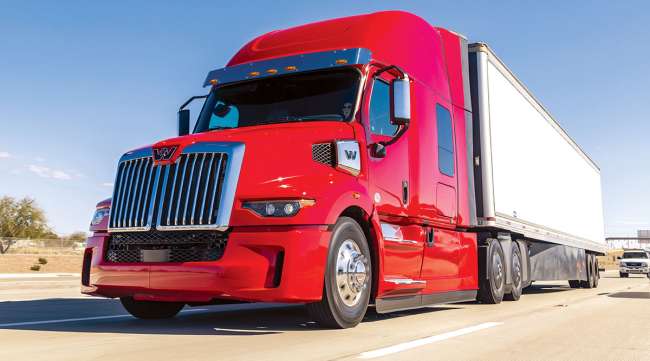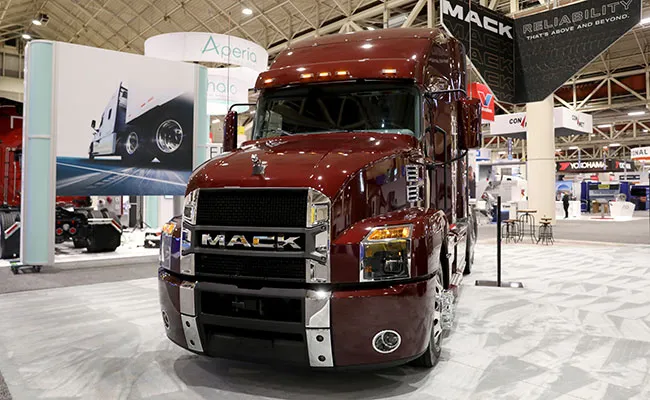Staff Reporter
US Class 8 Truck Sales Fall Again in March

[Stay on top of transportation news: Get TTNews in your inbox.]
U.S. Class 8 retail sales continued to decline year-over-year in March, according to data from Wards Intelligence.
Sales decreased 20.8% to 19,658 units from 24,823 in March 2023, the eighth consecutive month that sales fell year-to-year. The results, however, were 11.6% higher than the previous month's total of 17,619 units. Year-to-date sales are down 13.9% to 55,862 units from 64,906.
“They are tracking very well with where our forecast is,” ACT Research Vice President Steve Tam said. “So if I annualize that number, it comes out to about a 230,000 unit number, and our forecast for U.S. Class 8 is 228,000. It doesn’t get much closer than that. So I think it’s well within the guardrails of normal or expected.”
Tam noted that there appears to be some moving around in terms of seasonality, given the first two months of the year were fairly decent. January and February are usually slower coming off the typical year-end push, so he noted the latest figures not picking up as much as anticipated is still understandable and within the range of annual estimates.

Tam
“We have been calling for a downturn in the market for this year,” Tam said. “We’ve got too much equipment in the fleet. We’ve overcapitalized, and we don’t have the freight growth to absorb that excess capacity. And so carriers are in a situation where they’re seeing lower profits, and when that happens, you have to stop spending somewhere.”
Freightliner, a brand of Daimler Truck North America, claimed the largest market share with 7,214 trucks sold, accounting for 36.7% of all sales for the month. That still was a 21.7% decrease from 9,208 the prior year. Western Star, also a DTNA brand, saw the only year-over-year increase in truck sales of the major brands at 32.1% to 806 units from 610.
“The numbers that came in for March were lower than what we expected and noticeably lower, by over 2,500 units,” FTR Chairman Eric Starks said. “That’s not tremendously concerning, but it’s just suggesting that things are moving, by and large, in the direction that we had anticipated and that people are still not willing to take some of that equipment. The bigger issue that I saw of this particular data was that we had an increase in stocks.”

Starks
Wards noted truck stockpiles at the end of the month were at 59,803 units. Starks had anticipated that the truck manufacturers would actually shrink inventories, but the data suggests they are continuing to produce at a pretty decent pace relative to the incoming sales activity.
“This is telling us right now that things are slowing down a little bit faster than one, we had thought, and two, what many of the industry had anticipated,” Starks said. “That inventory relative to sales number is above three months. That is a pretty high number.”
Starks added that there is typically too much inventory once it starts getting above 2½ months. He noted that with more than three months of stockpiles, manufacturers will have to pull back on production sooner rather than later.
“Freight rates have slowed as the market finds equilibrium between demand and carrier capacity,” said Jonathan Randall, president of Mack Trucks North America. “That said, the economy remains solid with ongoing strength in consumer spending, construction and a robust labor market driving growth. While there may be a slight softening in demand for heavy-duty trucks compared with last year, sales are anticipated to stay above average with ongoing resilience in vocational demand.”

A Mack truck at an industry show. The brand's sales declined 19.6% year-over-year in March. (John Sommers II for Transport Topics)
Mack Trucks’ sales fell 19.6% to 1,388 units from 1,727 a year ago, and Volvo Trucks North America’s sales decreased 12.8% to 2,016 units from 2,313. Mack and VTNA are brands of Volvo Group.

Visser
“March’s sales figure represents about a 12% increase from February, which is a bit smaller than the typical increase for that period but still a solid performance,” said Chris Visser, director of specialty vehicles at J.D. Power. “Model year 2025 deliveries to date reflect relatively stable freight contract rates as the industry as a whole continues to offload excess capacity. The order environment looks less rosy, with a notable pullback in March. It’s possible this replacement cycle is maturing, and April’s order figure should provide more clarity.”
Peterbilt Motors Co. sales slipped 8.5% to 3,140 from 3,432. Navistar’s International brand experienced a 53.2% drop in sales to 1,945 from 4,154. Kenworth Truck Co. saw sales decrease 6.5% to 3,142 from 3,359. Peterbilt and Keworth are Paccar brands.
“The decrease in sales during the month of March is fairly consistent with our expectations for the year, and certainly YTD,” said David Kriete, president of Kriete Truck Centers. “The sleeper segment has taken the brunt of the YOY volume hit, most notably large ‘mega-fleet’ national accounts. The dealer network anticipated this backup in 2023. Fortunately, almost all other truck segments remain strong, and we remain bullish on production, customers’ business and our OEMs.”
Want more news? Listen to today's daily briefing below or go here for more info:




